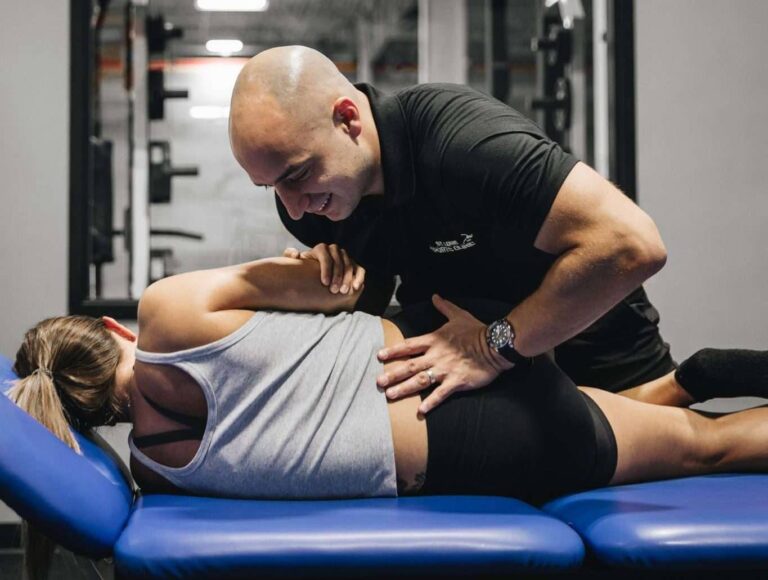What is Arthritis and How is it Treated?

Arthritis is a common but often misunderstood health condition that affects millions of people around the world. You might think it’s just something that older people get, but in reality, arthritis can affect people of all ages—even children. It causes pain, stiffness, and swelling in the joints, making it hard to move and carry out daily activities. But the good news is that there are ways to manage and treat arthritis effectively.
In this article, we’ll break down what arthritis is, its causes, symptoms, types, and how it can be treated. Whether you’re newly diagnosed, caring for someone with arthritis, or just want to learn more, this easy-to-read guide will help you understand it better.
What is Arthritis?
Arthritis is not just one single disease. In fact, the word “arthritis” refers to over 100 different types of joint-related conditions. The main thing they all have in common is inflammation in one or more joints, leading to pain and discomfort.
A joint is where two bones meet—like your knees, fingers, elbows, or hips. When you have arthritis, the area around these joints can swell, feel stiff, and hurt when you move.
Common Types of Arthritis
Here are some of the most common types of arthritis:
1. Osteoarthritis (OA)
- The most common form.
- Happens when the protective cartilage that cushions your bones wears down over time.
- Common in older adults and can affect knees, hips, hands, and spine.
2. Rheumatoid Arthritis (RA)
- An autoimmune disease where your body’s immune system attacks your joints.
- It can cause severe inflammation, damage to joints, and other health problems.
- More common in women and can happen at any age.
3. Psoriatic Arthritis
- Affects people with a skin condition called psoriasis.
- Causes joint pain, stiffness, and swelling, along with skin symptoms.
4. Gout
- Caused by a build-up of uric acid crystals in the joints.
- Usually starts with sudden, intense pain in the big toe.
- Linked to diet, alcohol, and certain medical conditions.
5. Juvenile Arthritis
- Occurs in children under 16 years old.
- Causes swelling, stiffness, and joint damage if not treated early.
What Causes Arthritis?
There isn’t one single cause of arthritis. It depends on the type. But here are some common risk factors:
- Age: The risk increases as you get older.
- Family history: Some types run in families.
- Injury: Past joint injuries can lead to arthritis.
- Obesity: Extra weight puts pressure on your joints.
- Autoimmune issues: In diseases like RA, the immune system mistakenly attacks the joints.
Symptoms of Arthritis
The symptoms can vary depending on the type of arthritis, but here are some general signs:
- Joint pain and tenderness
- Stiffness, especially in the morning
- Swelling around joints
- Redness and warmth near the affected area
- Reduced range of motion
- Fatigue (especially in autoimmune types)
If you have any of these symptoms regularly, it’s a good idea to see a doctor for proper diagnosis
How is Arthritis Diagnosed?
Doctors use a mix of tools to diagnose arthritis, including:
- Medical history and physical exam: Asking about symptoms and checking your joints.
- Blood tests: To check for inflammation or autoimmune activity.
- Imaging tests: X-rays, MRIs, or ultrasounds to look at joint damage.
An early diagnosis is important because starting treatment sooner can prevent joint damage and reduce pain.
How is Arthritis Treated?
While arthritis can’t always be cured, it can be managed successfully. Treatments aim to:
- Relieve pain
- Reduce swelling and inflammation
- Improve joint function
- Prevent further joint damage
Here are the most common treatment options:
1. Medications
Different medications are used depending on the type of arthritis:
- Pain relievers: Like acetaminophen or NSAIDs (e.g., ibuprofen).
- Anti-inflammatory drugs: To reduce swelling.
- Corticosteroids: Fast-acting drugs that reduce inflammation.
- DMARDs (Disease-Modifying Anti-Rheumatic Drugs): Used for autoimmune arthritis like RA.
- Biologics: Advanced drugs that target specific parts of the immune system.
Always follow your doctor’s advice when using these medications, as they may have side effects.
2. Physical Therapy
Working with a physical therapist can help:
- Improve range of motion
- Strengthen muscles around the joints
- Teach you exercises to reduce pain and stiffness
3. Lifestyle Changes
Simple changes in your daily routine can make a big difference:
- Regular exercise: Low-impact activities like swimming, walking, or yoga.
- Weight loss: Reduces pressure on joints, especially the knees and hips.
- Healthy diet: Anti-inflammatory foods like fruits, vegetables, whole grains, and omega-3 fatty acids.
- Rest and balance: Don’t overdo activities; take breaks when needed.
4. Assistive Devices
Using tools like braces, canes, or shoe inserts can help reduce stress on painful joints and make daily tasks easier.
5. Surgery (in severe cases)
When other treatments don’t help, surgery may be needed:
- Joint replacement: Common in hips or knees.
- Joint repair: Smoothing or realigning the joint.
- Joint fusion: Fusing bones together for stability.
Can Arthritis Be Prevented?
You can’t always prevent arthritis, especially if it runs in your family. But you can lower your risk by:
- Staying active
- Avoiding joint injuries
- Maintaining a healthy weight
- Eating a balanced, anti-inflammatory diet
- Avoiding smoking and excessive alcohol
Living With Arthritis
Living with arthritis can be challenging, but it doesn’t mean you can’t enjoy life. With proper treatment, support, and self-care, many people with arthritis live active, fulfilling lives. It’s important to listen to your body, manage stress, and work closely with your healthcare team.
5 Common FAQs About Arthritis
1. Can young people get arthritis?
Yes, arthritis can affect people of any age, including children and teenagers. Juvenile arthritis is a real condition that affects thousands of kids worldwide.
2. What’s the difference between osteoarthritis and rheumatoid arthritis?
Osteoarthritis is caused by wear and tear of cartilage over time. Rheumatoid arthritis is an autoimmune disease where the body attacks its own joints.
3. Is exercise safe if I have arthritis?
Yes! In fact, regular, low-impact exercise can reduce pain and stiffness. It’s important to choose the right activities and not overdo it.
4. Will I need surgery if I have arthritis?
Not always. Most people manage well with medications, therapy, and lifestyle changes. Surgery is considered only when symptoms are severe and affect your quality of life.
5. What foods are good or bad for arthritis?
Foods rich in omega-3s (like salmon), fruits, vegetables, and whole grains help fight inflammation. Avoid processed foods, sugary snacks, and too much red meat.
Conclusion
Arthritis is more than just joint pain—it’s a complex condition that can impact your daily life. But with the right approach, you can take control of it. Understanding what arthritis is, the different types, and how it’s treated is the first step. Whether through medications, therapy, exercise, or simple lifestyle changes, there are many ways to manage arthritis and improve your quality of life.
If you or someone you know is dealing with joint pain or stiffness, don’t ignore it. Early action can make a big difference.
Dr. Emma Green is a health and wellness expert with over 10 years of experience in nutrition and fitness. Passionate about helping others live their healthiest lives, Dr. Green shares practical advice on wellness, nutrition, and sustainable living through LivingSpristine.






